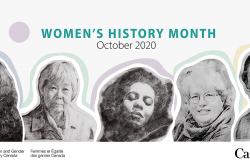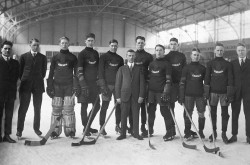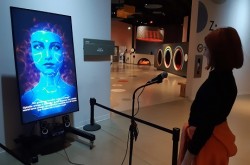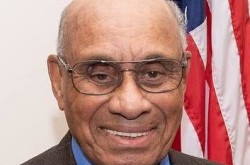Telescope brings Western and Indigenous astronomy into focus

Two streams of astronomical thought and practice are represented in a stunning display at the Canada Science and Technology Museum – but visitors will need to act fast in order to see it.
A telescope made by Eustachio Divini – an extremely fragile and valuable artifact which dates back to 1665 – is on international loan for the next six months, after travelling all the way from the Museo Galileo in Florence, Italy to Ottawa. The unexpected backdrop to this ornamented artifact – which is regally displayed in a humidity-controlled, glass case – is an Indigenous star knowledge wall.
“From that time, in the 1600s, this telescope represents the Western astronomical knowledge that came to Canada, to New France,” explains David Pantalony, Curator of Physical Sciences and Medicine for the museum, adding the telescope was made about 50 years after Galileo first used telescopes.
However, Pantalony emphasizes the importance of recognizing that Canada’s Indigenous Peoples had developed their own extensive knowledge of the stars, which originated even earlier in history. The Indigenous astronomy section in the museum's Hidden Worlds exhibition was co-curated by Annette S. Lee and Wilfred Buck.
“We have this section of Indigenous star knowledge that represents thousands of years of tradition of looking at the night sky, by the First Peoples of North America, so that’s older but it’s also quite contemporary because it’s reviving in those communities today,” he says. “We’re putting the telescope in a new context; we’re trying to get a conversation going between these two worlds.
“The telescope represents the beginning of Western astronomy in Canada – the kind of astronomy that was Western and European – but at the same time, coexisting with thousands of years of Indigenous astronomy.”
Made of glass, wood, cardboard, and leather, Divini’s telescope fully extends to a length of 8.8 m, although in its case at the museum it extends to only about 3 m.
“Think of that, in 1665,” muses Pantalony. “How dramatic that would have been!”
At the same time, he adds it was a difficult telescope to use; some historians argue it was more of a showpiece, to illustrate the sheer power of telescopes. It was, however, similar to the type of telescope that was used to confirm the discovery of the rings of Saturn.
Pantalony says he’s pleased that the renovated museum – which reopened its doors on Nov. 17 following a three-year closure – now has the expanded facilities to borrow artifacts from international collections.
“These loans become a focal point for much more than just telling exhibit stories – they help us build communities,” he says. “The science attaché at the Italian embassy is quite excited about this being here.
“It provides a focal point for discussing Italian science and technology – past, present, and future – with us; we’re trying to be more global than ever, while at the same time, looking more inward through the Indigenous perspective.”

































































